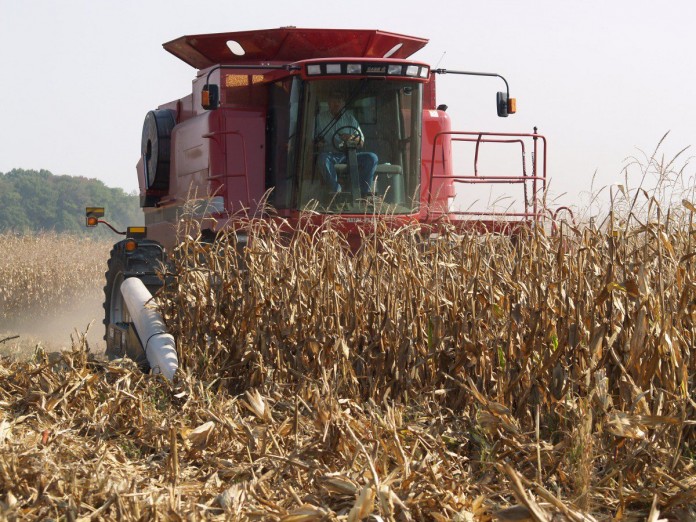We have been preaching about flex leases for years. Flexible cash leases are THE ANSWER to all problems plaguing farmers and landowners attempting to find an equitable cash lease each year.
Right?!
Well….OK, maybe not.
Flex leases may not be for everyone, but they may be a tool you should at least consider as you try to manage the volatility in the crop sector these days.
What’s equitable?
Landowners and farmers have found it increasingly hard to agree on an equitable cash rent as crop prices and input costs have experienced a fair bit of volatility over the last several years.
Cash lease rates aren’t public knowledge and don’t have any public clearinghouse such as a futures exchange, so information on rates is often sketchy. The local diner does not qualify as a reliable information clearinghouse!
Farmers with full yield and profit information are often reluctant to share this information with the landowner for fear of rent escalation. Landowners knowing there is significant value in “fringe benefits” that farmers provide (snow clearing, rock removal, fence-row maintenance, tiling, etc.. ) may be reluctant to recognize this value in the negotiation process.
Farmer: “I’m only paying $100 per acre for a similar farm” or
Landowner: “My neighbor is getting $175 per acre for land that isn’t nearly as good as my farm.”
Those phrases are often part of the discourse as landowners and tenant farmers negotiate for a “satisfactory” lease amount.
Takes management
Flexible cash leases do allow flexibility, of course, but they may not be for everyone. They do require more communication between landowner and farmer.
They also require more management and record keeping.
These flex leases typically require a sharing of data from the farming operation and have a set of mathematical calculations that need to be performed at the end of the lease period. Since most flex leases require some combination of yield and price, there needs to be verification mechanisms agreed to and written into the lease.
(And yes, we know that not all of the leases out there are of the written variety! We recommend that you rectify this situation… that discussion is for another column…)
The following two examples display a couple of different flex lease methods that have been utilized by farmers in Ohio. The parameters included in these examples are only one possible set of figures and are not meant to suggest that these should be included in all flex leases. Lease parameters will vary widely.
Flex Lease #1 — Cash Lease with a Bonus Approach.
Tenant and Landowner agree on:
- Base Rent (and max rent?) Base rent should be below market rent due to landowner upside.
- Base Gross Revenue (agreed upon price x yield combo or tenant cost of production plus X$s?);
- How to calculate and verify actual year-end revenue (yield and price verification);
- How extra revenue (actual revenue – base revenue) is shared? What %?
Example:
Base Rent: $100 (Max: $200);
Base Revenue: $798 (145bpa*$5.50/bu.);
Excess revenue shared: 33% to landowner;
Actual Revenue: $949 (165bpa*$5.75);
Bonus: ($949-$798)*0.33 = $50;
Total Flex Cash Lease Amount: $100 + $50 = $150/acre
Flex Lease #2 — Percent of Gross Income Approach.
Tenant and Landowner agree on:
- Minimum rent (and max. rent?) Mininum rent should be below market rent due to landowner upside.
- How to calculate and verify actual year-end revenue (yield and price verification)
- Percent of gross income as rent by crop (range of percentages often used: corn – 25-33%, soybeans – 35-42%)
Example:
Minimum Rent and Maximum Rent: Minimum $100 and Maximum $200;
Percent of Gross Income as Rent:
Corn -25%
Soybeans – 35%
Actual Revenue:
Corn – $650 (130bpa*$5.00)
Soybeans – $440 (40bpa*$11.00)
Rent: Corn -$650*0.25 = $163/a
Soybeans -$440*0.35 = $154/a
Trust, but verify
The verification part of a flex lease may be the trickiest part of the whole arrangement.
The price component verification can be easily solved by choosing a market destination for price averaging in the flex lease calculation that is accessible to both tenant and landowner. Four to 10 dates for closing prices may be agreed upon to include in the average price.
The difficult parameter to verify in most flex lease calculations is the yield component. Depending on the level of trust between the two parties, weight tickets, yield maps or bin measurements may be sufficient.
If another verification piece is required, crop insurance yield submissions may be a good option.
One possible suggestion for handling crop insurance payments in a flex lease is to share the crop insurance proceeds and premiums in the same percentage as flex lease parameters.
Read more
For more information on flex leases, or farm leases in general, see the following sites:
OSU Extension Farm Rental Factsheet Series
http://ohioline.osu.edu/fr-fact/index.html
Legal Aspects of Ohio Farmland Leases
http://agnr.osu.edu/sites/d6-agnr.web/files/FarmLeaseFactSheet2008_1.pdf
AgLease101
http://aglease101.org/
Flexible Cash Rent Lease Examples
http://www.extension.iastate.edu/agdm/wholefarm/html/c2-22.html













